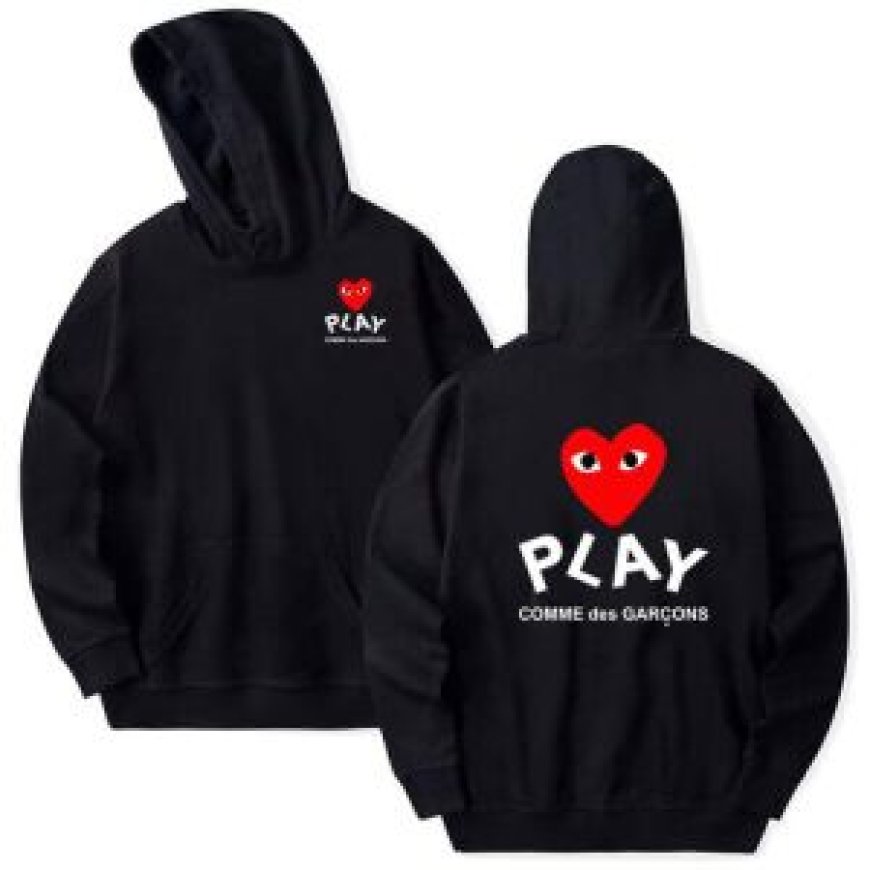Discover the Bold Aesthetic of Comme Des Garçons Fashion Today

Introduction: A Vision Beyond Convention
Comme Des Garons is more than a fashion brandits a powerful movement that reshapes how we understand clothing, style, and identity. Since its founding by Rei Kawakubo in 1969, the brand hasComme Des Garcons continually challenged norms and redefined the possibilities of what fashion can represent. In a world of fast trends and repetitive cycles, Comme Des Garons has remained a beacon of originality, delivering pieces that provoke thought, emotion, and curiosity. The bold aesthetic of Comme Des Garons is not simply about standing out; its about pushing the boundaries of structure, form, and culture.
The Language of Avant-Garde Expression
The signature look of Comme Des Garons defies simple classification. Known for deconstructed silhouettes, asymmetrical shapes, raw hems, and unexpected fabrics, each garment is a statement in and of itself. The brand rarely follows conventional fashion rules. Instead, Kawakubo has created her own vocabularyone where clothes become a canvas for expressing themes like imperfection, rebellion, contradiction, and emotion.
Rather than aiming for what is traditionally considered beautiful or flattering, the designs often intentionally distort the human form. Padded lumps, exaggerated shoulders, and layered textures invite viewers and wearers to question beauty standards and redefine what it means to be fashionable. Comme Des Garons doesnt seek to blend in or be universally appealing; it seeks to be deeply authentic and unapologetically individual.
The Philosophy Behind the Fabric
Rei Kawakubos approach to fashion is deeply philosophical. She once described her goal as creating something that didnt exist before. This ethos permeates every collection and presentation. Comme Des Garons garments often carry messages about identity, society, and the role of fashion in shaping personal and collective narratives.
For Kawakubo, fashion is not decorationit is an intellectual and emotional experience. This belief has translated into bold fashion shows that feel more like performance art than traditional runway displays. Models have walked with their faces obscured, in sculptural garments that resemble abstract art pieces rather than clothing. These presentations force the audience to engage with the garments as more than mere productsthey become symbols, questions, and provocations.
Comme Des Garons in the Streetwear Era
While its avant-garde side is most famously represented on the runway, Comme Des Garons has also found a powerful voice in everyday fashion, particularly through its sub-line Comme Des Garons PLAY. The instantly recognizable heart-with-eyes logo has become an emblem of artistic streetwear, worn by creatives, musicians, and trendsetters around the world.
PLAY offers a more approachable entry point into the brands universe without diluting its core identity. With minimalist tees, polos, and cardigans featuring the iconic heart motif, PLAY retains the rebellious DNA of the main line while adding a layer of simplicity and accessibility. It serves as proof that boldness doesnt always have to be loudit can be quietly confident, whimsical, and wearable.
Collaborations That Change the Game
Comme Des Garons has also pioneered a new kind of fashion collaboration. Rather than simple branding exercises, their partnerships with other designers and companies often result in true innovation. Whether working with Nike, Supreme, Converse, or even luxury labels like Louis Vuitton, Comme Des Garons injects each collaboration with its signature avant-garde edge.
These partnerships bridge high fashion with youth culture, streetwear, and athletic aesthetics, allowing Comme Des Garons to influence mainstream trends while staying fiercely independent. Each collaboration is an extension of the brands central philosophymerging contradiction, creativity, and commentary into one unified vision.
A Genderless and Timeless Attitude
Another defining feature of Comme Des Garons fashion is its disregard for traditional gender norms. Many collections offer a fluid silhouette that resists binary categories. Skirts for men, suits for women, oversized tailoring, and unconventional proportions all contribute to an aesthetic that feels inclusive, open, and exploratory.
This genderless approach aligns with contemporary movements in fashion that seek to dismantle outdated ideas of masculinity and femininity. Comme Des Garons was ahead of its time in this regard, long before gender-neutral fashion became a buzzword in the industry. The garments speak to anyone who sees clothing as a tool for self-expression rather than a set of fixed categories.
Rei Kawakubo: The Mind Behind the Movement
To truly understand the boldness of Comme Des Garons, one must recognize the genius of Rei Kawakubo. Elusive and enigmatic, Kawakubo rarely gives interviews or speaks at length about her designs. This intentional silence adds a layer of mystery and forces her work to speak for itself.
Her influence extends far beyond the brand she founded. She has mentored a generation of designers, from Junya Watanabe to Kei Ninomiya, under the Comme Des Garons umbrella. Each designer contributes a unique vision, yet all remain rooted in the experimental spirit of the brand.
Kawakubos legacy is not simply in the clothes she creates, but in the questions she raises. What is fashion? Who is it for? What can it become? These questions define the boldness of Comme Des Garons far more than any single look or trend.
Cultural Impact and Fashion Identity
Comme Des Garons is often referenced in art, film, music, and pop culture, where its presence signifies depth and authenticity. Celebrities like Rihanna, Kanye West, and Frank Ocean have worn the brand, not merely for style points but to align themselves with its artistic integrity. For many, wearing Comme Des Garons is a way to communicate a deeper understanding of fashion as a cultural language.
The brands influence can also be seen in fashion education, where Comme Des Garons is frequently studied for its innovative techniques and conceptual approach. Museums and galleries have honored its work, with retrospectives like the 2017 MetropolitanComme Des Garcons Hoodie Museum of Art exhibition, Rei Kawakubo/Comme Des Garons: Art of the In-Between, solidifying its place in fashion history.
Conclusion: Embrace the Unconventional
Discovering the bold aesthetic of Comme Des Garons is not about following trendsits about discovering a new way of thinking, dressing, and being. It is fashion that embraces imperfection, celebrates individuality, and dares to go beyond what is expected. In every stitch and silhouette, theres a story waiting to be interpreted, a challenge waiting to be accepted.
Whether through its high-concept runway pieces or the playful charm of the PLAY line, Comme Des Garons continues to redefine what bold fashion means today. It asks us not only to see beauty differently but to see ourselves differently. In a world dominated by sameness, Comme Des Garons remains fiercely originala brand that invites you to break the rules, think freely, and wear your identity with pride.
























